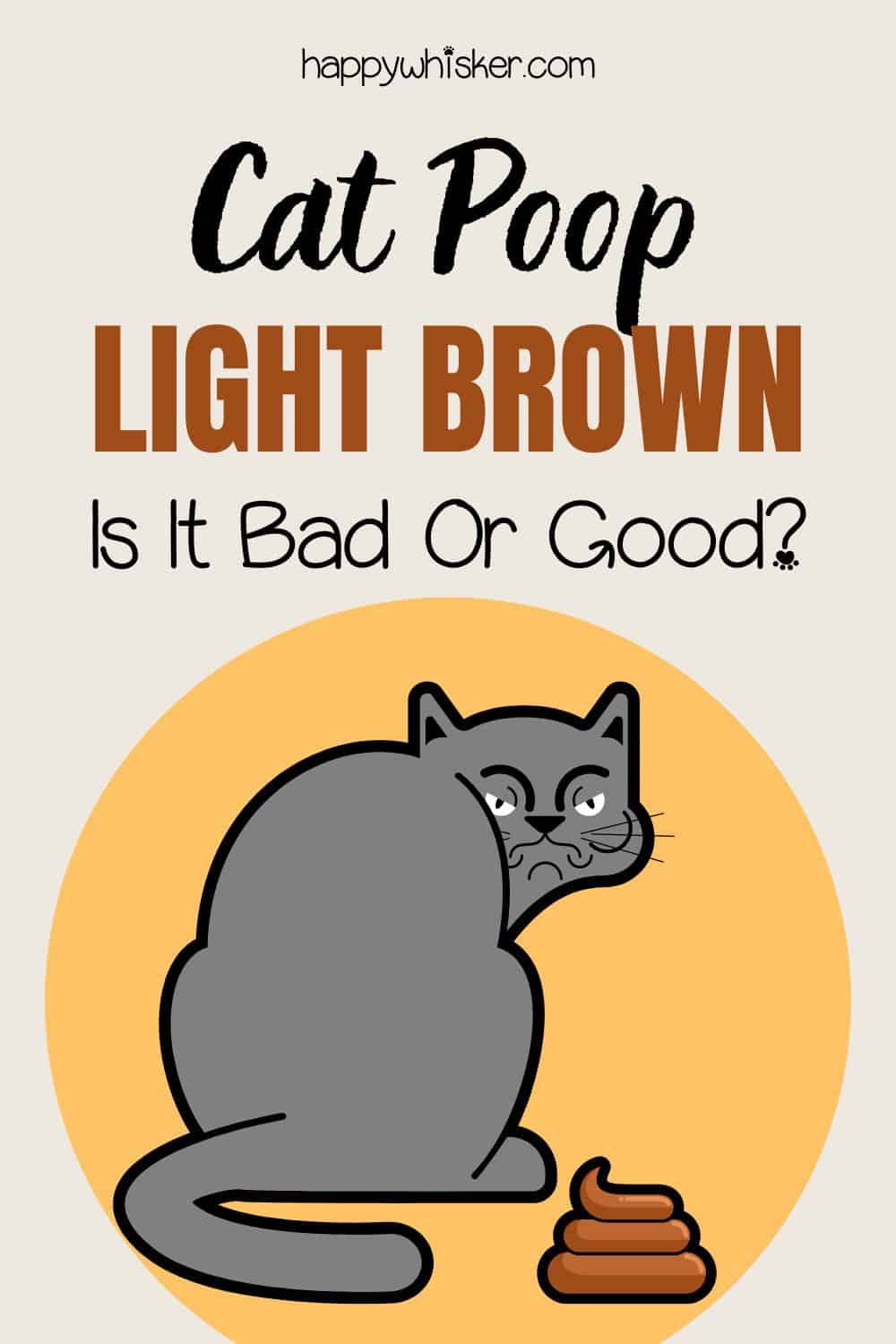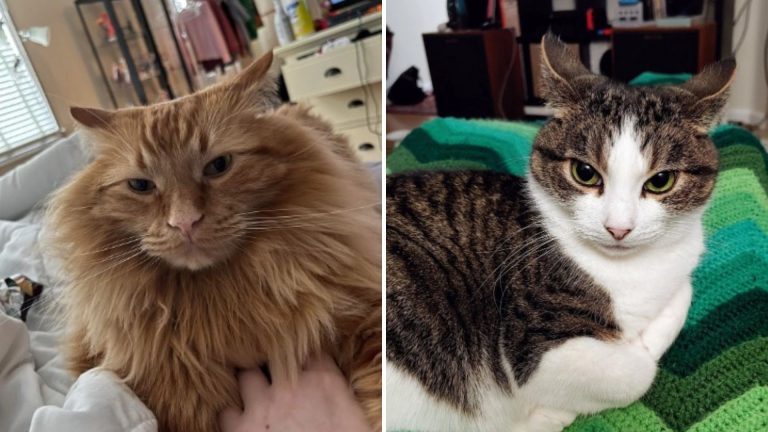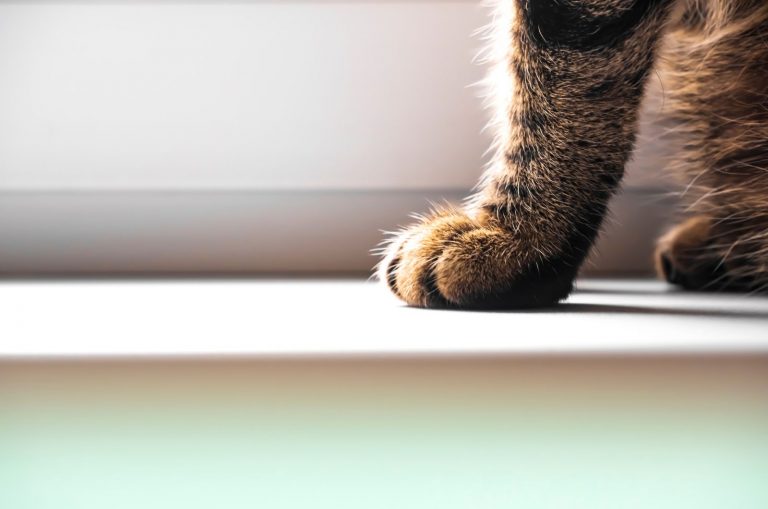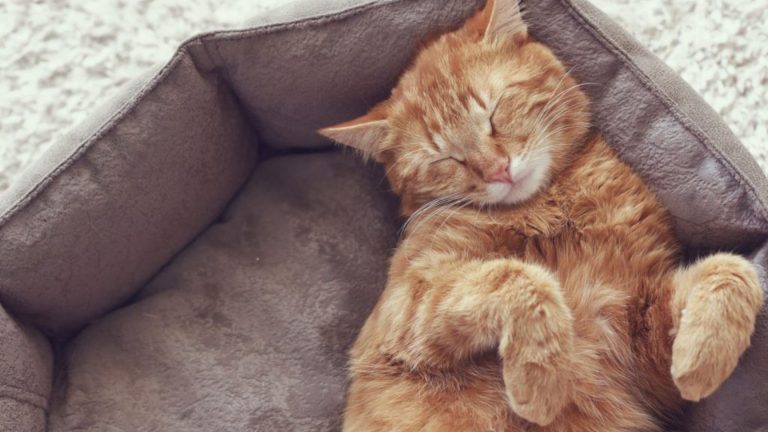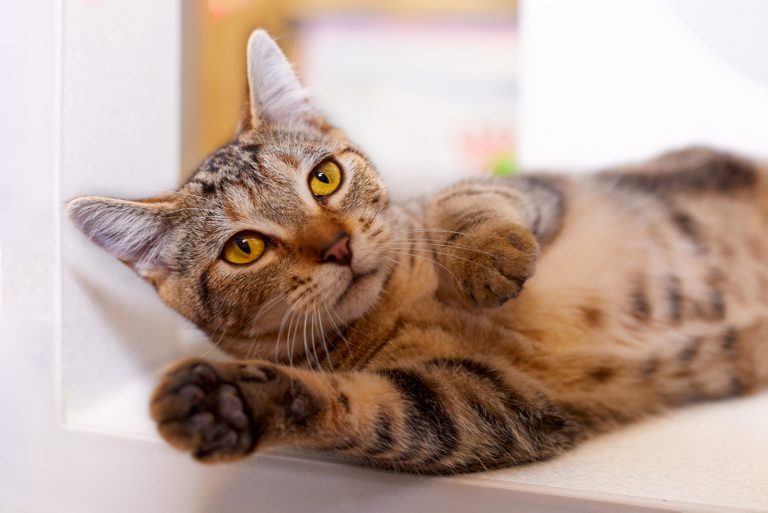Cat Poop Light Brown In Color – Is It Bad Or Good?
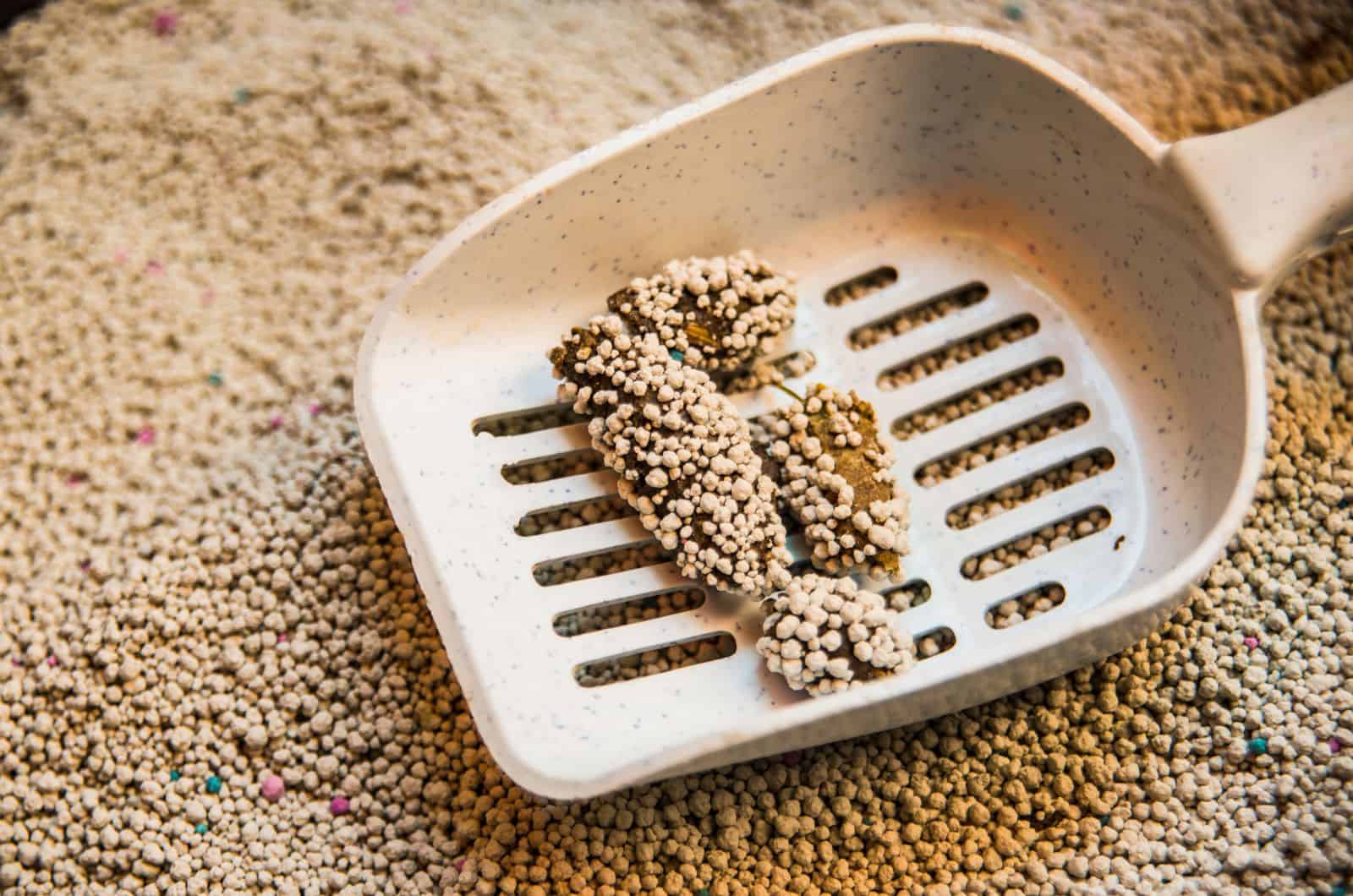
Believe it or not, cat owners can learn a lot about their cat’s health, just by observing their poop! Maybe you have noticed changes in your cat’s litter tray contents that have coincided with illness or behavior changes, or perhaps this is all new to you!
If you’re a cat owner, you will have noticed that your cat’s poop is usually brown and of a firm consistency. Have you ever noticed different shades of brown such as light brown, or unusual poop consistencies?
This article will explain what it means if you notice cat poop light brown in color. Is it good, or is it bad? Should you worry? What does it indicate? Read on to find out – it could be very useful when caring for your feline friend.
Cat Poop Light Brown In Color – The Meaning
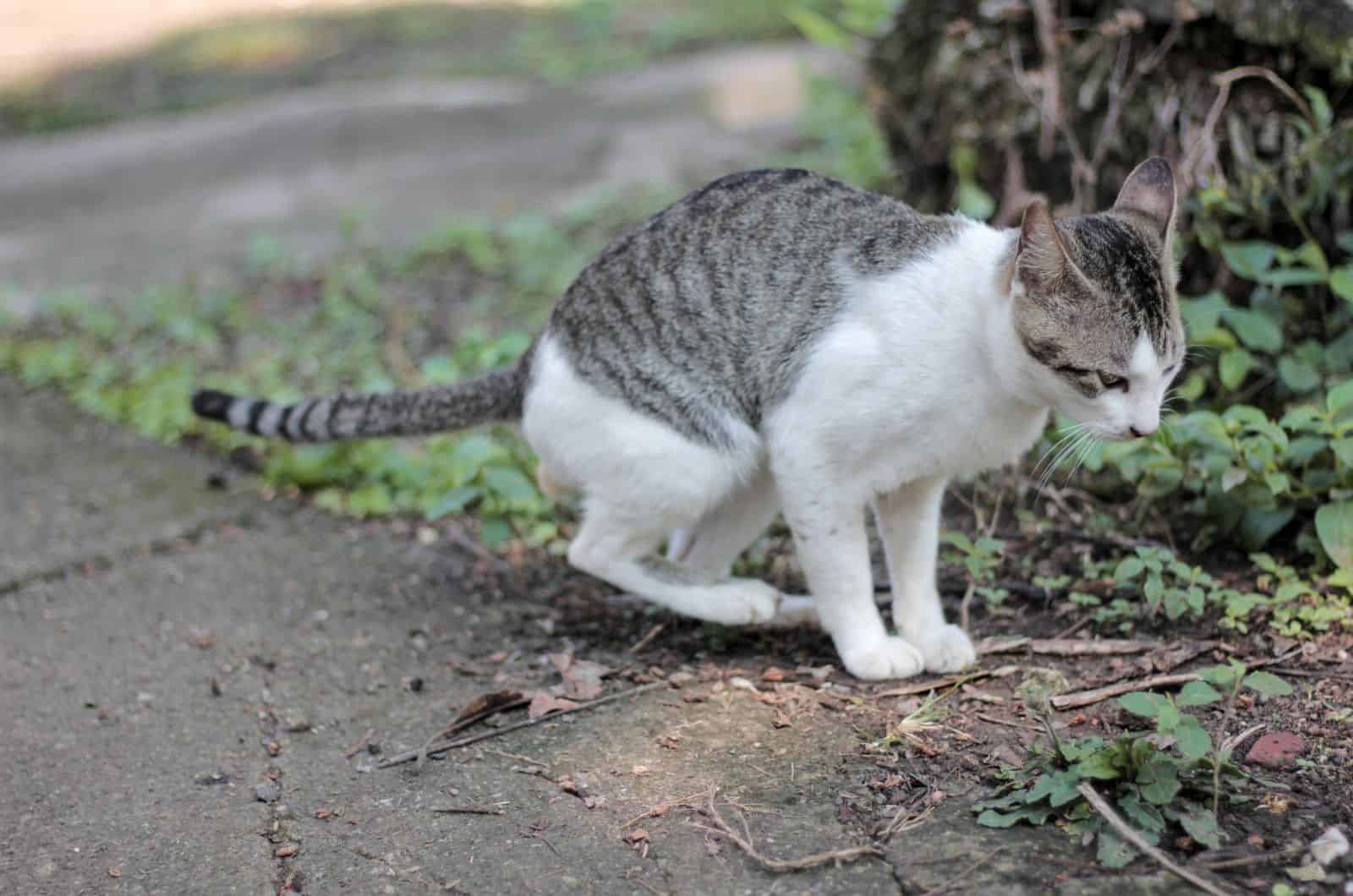
Before we discover if cat poop light brown in color is good or bad, first we should learn what cat poop should look like normally.
A healthy cat should defecate once or twice a day. If your kitty is healthy, its poop should be brown or dark brown in color with firm consistency.
What if your feline has light colored cat poop?
Well, as long as your cat has a brown poop color it’s usually ok, regardless of whether it’s a dark brown stool or a lighter one. However, to be a healthy stool, it should have a firm consistency that doesn’t leave marks.
If you are wondering why is my cat’s poop light brown, here’s what you need to know!
The reason for light colored cat poop is usually down to the cat food that it eats. It’s interesting that as soon as you change your cat’s food, a sudden change appears in the cat’s poop color too! This demonstrates the importance of a cat’s diet for its overall health.
Cats should be fed with top-quality cat food that will provide them with all the necessary proteins and nutrients to keep them healthy.
In general, light brown poop color isn’t that bad, as long as it’s firm and as long as the cat doesn’t show any other symptoms of illness.
However, if the poop has any consistency other than firm, then it may indicate potential health issues.
Health Issues That Result In Light Brown Cat Poop
Cat poop usually appears to be light brown due to a change in the cat’s food. However, it’s possible that this lighter coloration of the cat’s poop occurs as a result of certain health issues that may require professional cat care from a veterinarian.
1. Liver problems
Even though cat poop light brown in color doesn’t usually indicate serious health issues, if it is accompanied by certain other symptoms, it may point to liver problems.
Lethargy and weakness, loss of appetite, weight loss, vomiting, excessive meowing and thirst, stomach ulcers, and frequent urination are just some of the symptoms that may appear.
When a cat suffers from liver disease, it cannot normally produce bile (an acidic liquid that helps with digestion). This may result in light brown or orange cat poop.
The best option is to take your cat to the vet for a checkup as soon as you notice any of these symptoms. The veterinarian will perform some diagnostic tests, including blood tests, urinalysis, and x-rays.
Furthermore, they will provide your cat with the appropriate treatment for the specific liver problem that has been diagnosed. These treatments often include dietary changes, switching to cat food with low carb levels.
2. Kidney Problems
If your feline has light brown stool and starts showing symptoms such as excessive thirst and meowing, loss of appetite, weight loss, hypertension, lethargy, weakness, and frequent urination, it could be that your cat is suffering from kidney disease.
Kidney disease, as the name suggests, means loss of kidney function and this is a very common health issue in cats. As soon as you notice these symptoms, you should contact your veterinarian.
The vet will run some tests in order to confirm the diagnosis; this will include urinalysis, blood tests, x-rays, etc. Based on the results, the vet will provide the best treatment for the cat.
Unfortunately there’s no medication that can completely cure kidney disease. However, with modern improvements in medicine, there are certain things that can help cats to live better lives with this disease. Supplements or dietary changes, for example, can help manage the condition.
Different Shades Of Brown Cat Poop
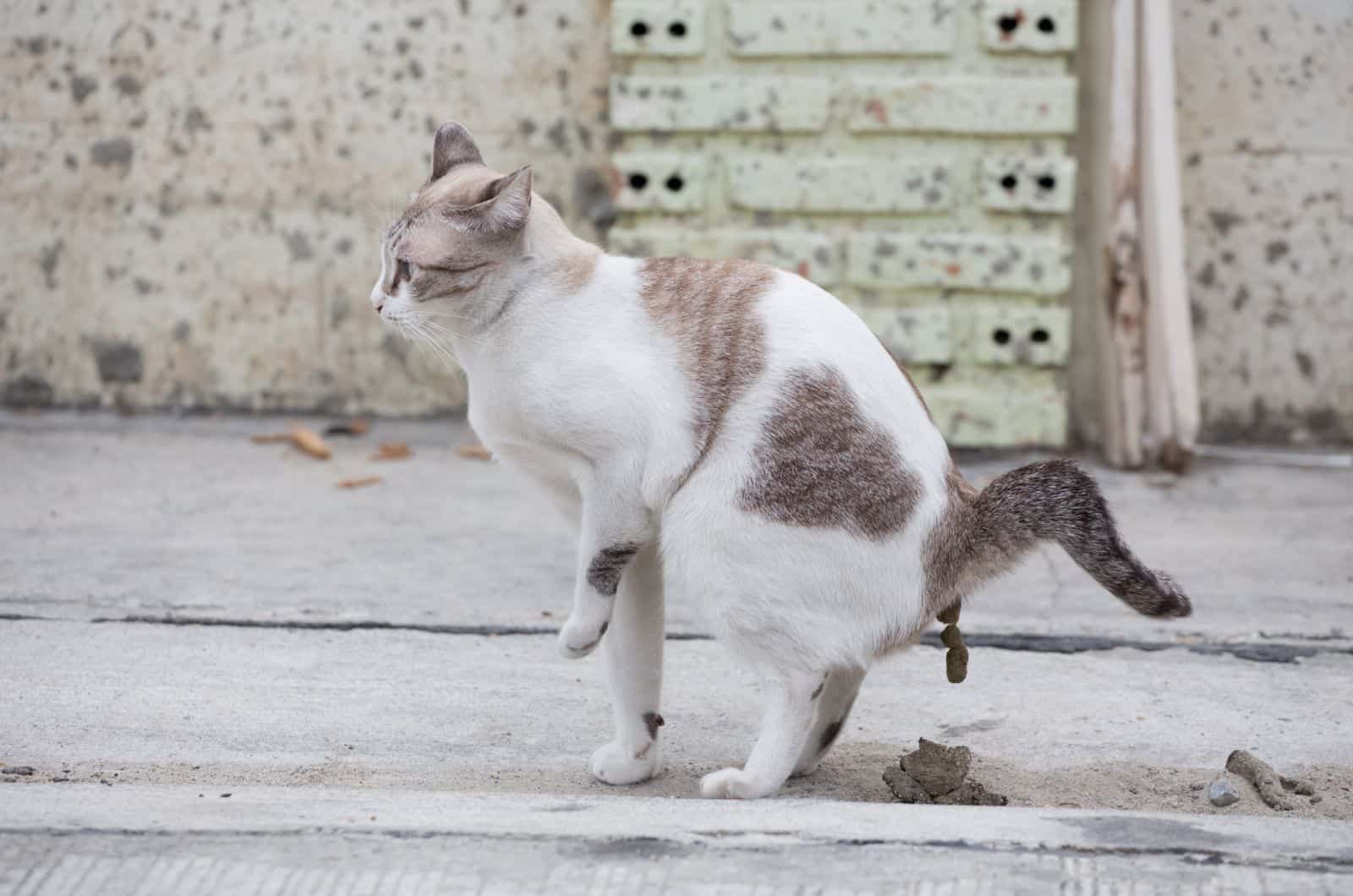
While a normal cat poop should be brown, it may be any shade of brown, as long as it’s shaped like a sausage, has firm consistency, and looks like playdough.
The shade of brown may vary depending on the cat’s food, and it is rare for these shades to indicate serious health issues.
However, consistency also plays an important role in determining whether a cat’s stool is healthy or not. Brown-colored poop that does not have a firm consistency can mean that something’s not quite right.
Keep reading to learn more about different poop consistencies as this knowledge can really be lifesaving.
Main Differences in Poop Consistency
Even if a cat poop is brown in color, another major factor in whether the cat poop is normal or not, is its consistency.
Firm Cat Poop
As previously mentioned, a healthy cat has a firm stool. That means that the poop is like a piece of playdough; easy to pick up and leaves no traces on the cat’s litter box. The most important thing is that stool is completely brown without traces of any other substances in it.
Cat Poop – Half Firm, Half Soft
If the cat’s stool is half firm and half soft, your cat may have an upset stomach as a result of new cat food or another dietary change.
Stress may also cause this to occur. Luckily, these are only short-term issues and the cat’s stool should soon return to normal.
You should get in touch with your veterinarian if the cat’s stool doesn’t return to normal and symptoms continue or get worse.
Watery Stool
In most cases, a watery stool indicates that the sat is suffering from diarrhea. However, there are a few conditions that may result in a cat leaking brown fluid.
These conditions include bacterial infections, intestinal worms, inflammatory bowel disease (IBD), food allergies, viruses, etc.
If cat diarrhea continues after a day or two, it’s time to visit the vet. It’s essential that the vet examines your furry friend so that they can provide the most effective treatment for the specific cause.
Mushy Cat Poop
If your cat’s poop is darker or lighter-colored, but has a sort of mushy and loose stool consistency, then you seek advice from a veterinarian.
This doesn’t usually mean an extremely serious condition, but your cat still requires help. A soft, mushy consistency may indicate that a cat has intestinal parasites, a bacterial infection, or that it’s intolerant to certain types of food.
When you take your kitty to the vet, they will prescribe the recommended treatment for the condition. This may mean medication such as antibiotics for infections or dewormer for parasites, or a change to the cat’s diet, if it is suffering from some kind of food intolerance.
Hard, Dry Cat Poop
If your cat’s poop is brown in color but hard and dry, with a pebble or pellet shape, this is really not a good sign because it usually means constipation, intestinal blockage, or dehydration.
Constipation is when the cat has difficulty in passing a bowel movement and it can prevent proper defecation.
This poop consistency may also occur due to dehydration, which is why it’s important to provide your cat with plenty of fresh water, as well as considering canned cat food because it has a relatively high moisture level.
Cat Poop With White Rice-like Spots
You might think that a normal brown poop with some white spots is ok, but you’d be wrong! These white rice-like spots are actually tapeworms; intestinal parasites that infect a cat.
Tapeworms and roundworms are common types of intestinal parasites that attack the walls of the small intestine.
Unfortunately, this may lead to more complications (such as diarrhea or even digestive tract issues). You should isolate your cat with tapeworms in order to avoid spreading worms everywhere.
Cat Poop With Content
Sometimes, cat’s poop may come with an added surprise! Even though the color of the poop is brown as normal, the poop may contain other content. This is usually nothing to worry about.
For example, grass may appear in a cat’s stool, as cats lack the enzymes for the proper digestion of grass. If your pet is prone to over-grooming, the cat’s hair may also appear in its stool.
This is why it’s essential to pay special attention to grooming your cat, in order to reduce the amount of loose dead hair and regurgitation of hairballs.
What Does A Normal Cat Poop Look Like?

A normal cat poop should look like playdough; it should have a firm consistency and it should be brown in color.
Cat poop may be almost any shade of brown. It’s important that the cat doesn’t struggle while defecating and that the poo doesn’t leave traces on the cat’s litter box. These are good signs that the cat is healthy.
A lot can be learned about a cat’s health just by observing its stools, so it is helpful for every cat parent to be aware of the various possible poop colors and what they may mean for your cat’s health.
What Other Colors Can A Cat’s Poop Be?
• Black cat poop color – If your feline companion has a black, tarry stool, you should get in touch with your veterinarian right away. Black poop indicates that the cat has bleeding in their gastrointestinal tract or large intestine.
This may be accompanied by symptoms including nausea, vomiting, tiredness, weakness, etc. After a thorough examination, the veterinarian will treat your cat according to the underlying issue they have diagnosed.
• Yellow cat poop color – the cat’s stool may also be yellow in appearance. That might point to liver issues or similar conditions.
However, it doesn’t always mean a major issue. Of course, yellow feces is a little strange, so you might want to speak with your veterinarian.
• Orange cat poop color – Your cat may have liver or gallbladder issues if their feces are orange in color. Typically, a bacterial infection that begins in the intestines and progresses to the bile duct or spreads through the blood can cause this. Tumors, bile duct obstruction, and abdominal trauma might also result in gallbladder or liver issues.
It is important to contact your vet. They may advise supportive fluid therapy, antibiotics, vitamin supplements, or other prescription medications to treat cats with gallbladder or liver issues.
• Red cat poop color – As with black poop, red poop is not a good sign. Red blood that appears in the cat’s feces typically denotes bleeding in the anus or rectum.
Bacterial infections or infectious diseases like feline panleukopenia are just two examples of the possible causes of this bleeding. Take your cat to the veterinarian if the bleeding hasn’t stopped so that it can receive medical attention.
• Green cat poop color – If a cat has a parasitic or bacterial infection, this may be indicated by green cat stool. It typically occurs when a cat eats contaminated meat, water, or feces.
It can be confusing, because green feces could also be a consequence of the cat simply eating grass. I would still recommend you to contact your vet if you notice any unusual cat poop color. The vet will be able to determine the underlying cause and treat it properly.
• White cat poop color – of course, white poop is not normal in cats. White poop may indicate many health issues such as bacterial infections, liver and kidney problems, bile duct issues, dietary changes, intestinal parasites, etc.
As this is not normal at all and it can cause many problems for your cat, it’s crucial to contact your vet so that he can diagnose and treat the problem.
When Should You Take Your Cat To The Vet?
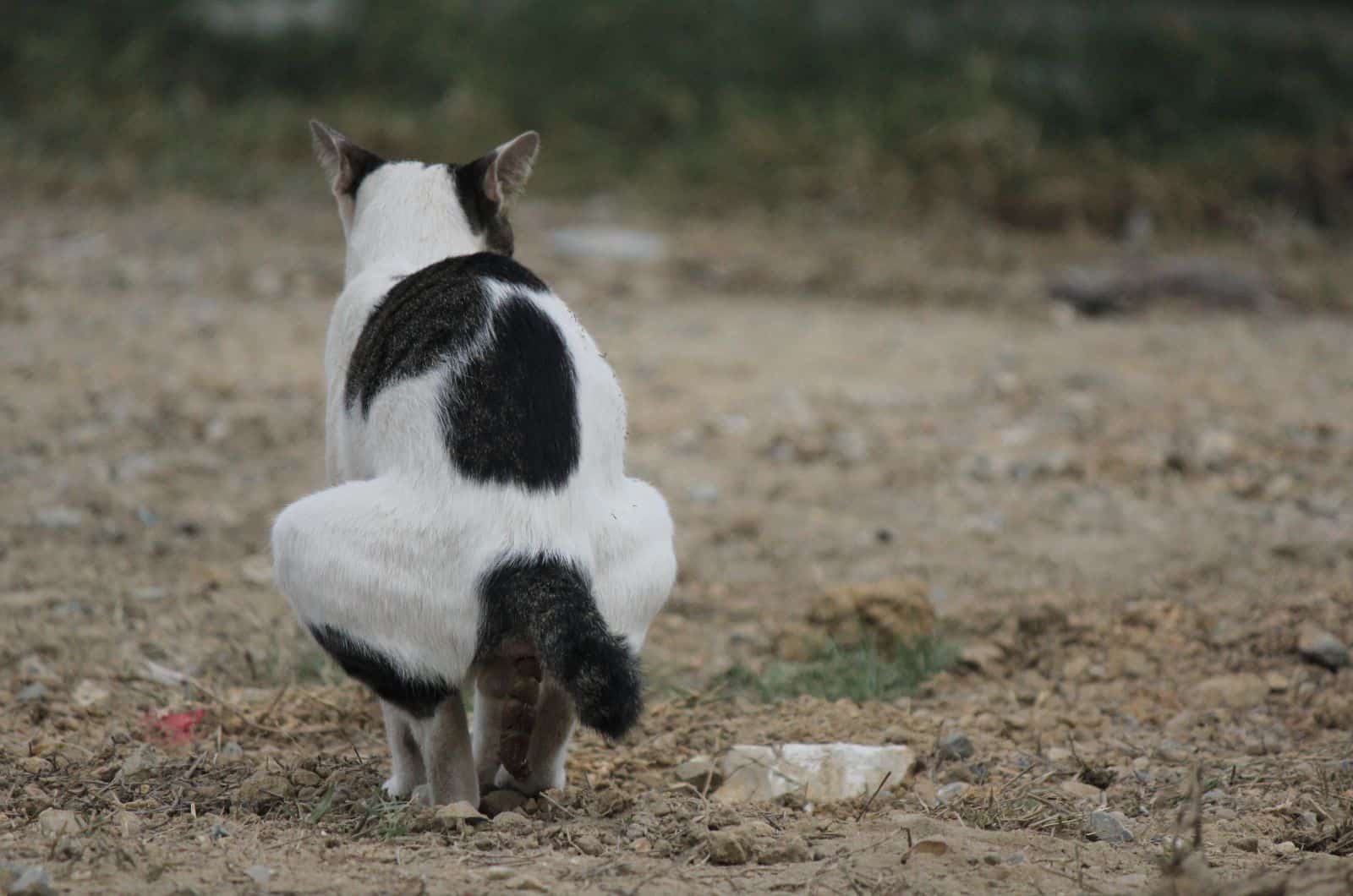
Cat poop light brown in color is completely normal, as long as the cat doesn’t display any of the other symptoms mentioned in this article. However, if other symptoms appear, then you should contact your vet and take your feline friend for an examination.
Remember, when cats don’t feel good they tend to hide their symptoms but you may notice behavior changes, which indicate that your pet needs special care.
You should also take the cat to the vet if :
• they have diarrhea for more than a day or two
• they suffers from constipation for two days
• they display frequent behavior changes
• they poop outside the litter box
• you find hair or grass in the cat’s stool
• there are traces of blood or mucus in the cat poop
• if you notice parasites such as tapeworms in the poop
The vet will run some tests and provide your feline friend with the best treatment for their health issue. Hopefully, you won’t have to worry because your cat is in the right hands and will be healthy soon again.
FAQ
Why Is My Cat’s Poop So Light?
Cat poop light brown in color may occur due to a particular cat food, for example if you have changed your cat food.
However, the reason for lighter-colored cat’s poop may also be a result of more serious health issues such as liver disease or kidney problems which, of course, require special investigations and medical help.
What Is The Color Of A Healthy Cat’s Poop?
A normal, healthy cat’s poop should be chocolate brown in color. Sometimes, a cat’s poop is a lighter or darker shade of brown, and that can be normal too. The only condition is that the cat’s poop is firm, like playdough, rather than too hard or too runny.
Why Can’t My Cat Go To Bathroom?
If your feline friend can’t go to the bathroom, it means that it is suffering either from intestinal blockage or from constipation.
That may happen due to low fluid intake. Therefore, a cat suffering from constipation needs to drink a lot of water, and there should always be plenty of fresh water available.
It can be a good idea to provide your cat with canned wet food, because it’s high in moisture which helps keep the cat hydrated.
Why Does My Cat Poop So Much?
If your cat poops a lot, it may mean that certain food doesn’t suit it. That usually happens in cats fed with low-quality cat food, which may lead to loose bowel movement and frequent defecations.
Frequent defecations may lead to diarrhea, which could be caused by food allergies, stress, viruses, infections, etc.
Final Thoughts
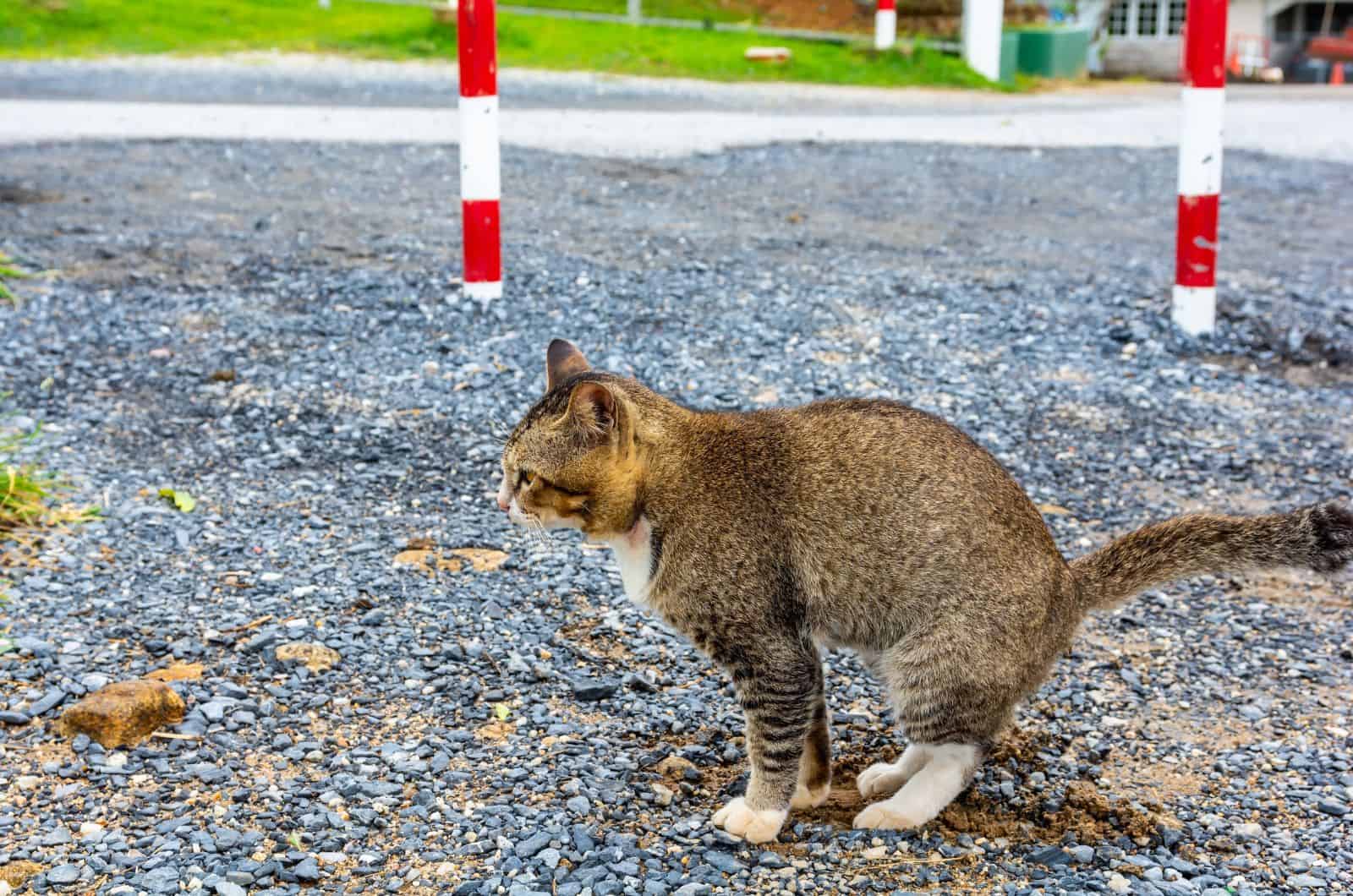
After reading his article, you should have concluded that, in most cases, it’s ok if you notice cat poop light brown in color. Lighter-colored brown cat poop may happen due to a simple change in the cat’s diet.
However, very rarely, light brown poop may point to certain health issues in cats. Of course, these issues are almost always accompanied by certain symptoms such as vomiting, fever, pain, loss of appetite, weight loss, and similar.
If you notice some of these symptoms along with light brown cat poop, make sure that you contact your vet and take your pet for a check up as soon as possible.
Now that you’re familiar with this topic, you may find yourself paying more attention while cleaning the cat’s litter box! It is always better to identify any potential problems quickly so they can be dealt with promptly and you can get on with enjoying your happy healthy cat.
Related Content:
• Why Does My Cat’s Poop Smell So Bad? Causes And Solutions
• How Long Can A Cat Go Without Using The Bathroom? Explained
• Why Is My Cat Pooping On Floor Randomly? Reasons & Solutions
Like this post? Share or pin it for later!
